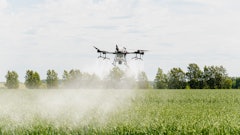
Continued labor shortages and rising costs for farm inputs and insurance are a few of the issues those in agribusiness must contend with in 2024. Yet, even amidst these challenges, there’s room for growth. By 2027, the global food and beverage market is expected to increase to about $9.2 billion, according to Food and Global Beverages Market Report.
To stay successful in the coming year, organizations must keep abreast of the challenges and know how to contend with them. Here are the Top 4 issues impacting the agribusiness market in 2024 and insights on how to address them.
1. The tight labor market.
According to the U.S. Chamber of Congress, there are 1.7 million fewer American workers in the labor force compared to February 2020. From farming to the manufacturing side of agribusiness, employers will have difficulty running operations due to a lack of employees. Labor shortages and even walkouts have beset food and beverage makers and will continue to do so in 2024.
According to HUB’s Outlook Executive Survey, about 70% of the respondents from the agribusiness sector noted that talent recruitment, employee “upskilling” and training will be crucial to the vitality of the workforce.
While automation has helped businesses contend with the labor shortage — particularly for those in food and beverage where many businesses operate automated assembly lines — it’s not a cure-all. Some organizations have gone back to using human labor because of automation-related issues, such as product defects, costs and lower overall production compared to human workers.
Organizations can boost workforce engagement — and retain employees — via personalized benefits that are informed by data analytics. Personalized benefits that offer quality employee experiences driven by data can help attract new workers, and increase employee loyalty for greater retention and lower risk.
2. Slimmer profit margins.
Tighter margins due to cost-related pressures will continue in 2024. These include damages from extreme weather-related events, high interest rates, the labor market and rising input costs.
In the last three years, input costs have greatly impacted those in agribusiness because of worldwide pressures, which are expected to continue in 2024.
Insurance costs are also cutting into profits and impacting the ability of those in agribusiness and the food and beverage market to secure sufficient insurance to protect their profit margins. Business interruption insurance policies are often costly. Crop insurance has become so expensive that some underwriters have pulled out of the market. Even stock throughput insurance, which covers a company’s goods through the supply chain and is essential for food producers and warehouses, is increasingly difficult to obtain.
Businesses can work with their brokers to lower insurance costs via alternative risk management vehicles.
3. Managing risk.
On top of supply chain issues, along with the threat of severe weather and potential cybercrime attacks, agribusinesses will need to factor in worker safety, manufacturing plant maintenance and product recall risk into their risk management strategies in the coming year.
Preparation is key for long-term stability. Food recalls are omnipresent; minimizing them requires strong product oversight, including performing periodic audits.
In addition, cybercrime is becoming more of a threat for all facets of the agribusiness industry — particularly for those in food and beverage production. Organizations can prepare for cyberthreats by educating employees to raise awareness, shoring up employee defenses, and by harnessing technology such as multi-factor authentication and endpoint detection and response systems.
Farms can limit the impacts of weather-related events, such as drought, with improved resource management. Agribusinesses also can use catastrophe modeling to develop risk management and business continuity plans.
4. Staying resilient.
Malware and ransomware attacks — and the reputational impacts stemming from them — are becoming more serious and costly. In addition, weather-related catastrophes such as massive wildfires, windstorms, flooding, record heat, droughts and flooding have decreased farm yields, making it difficult for food processors to procure raw materials.
These issues are making insurance renewals more difficult and insurance rates are expected to increase across the board in 2024. High property rates will burden food and beverage manufacturers, who can expect property rate increases up to 30%; and the likely increase of umbrella and excess liability insurance rates by 10% to 20%.
Yet specialized insurance solutions could provide a backstop against risk. For example, parametric insurance policies pay out after a qualified weather event, whether or not an insured actually sustains damage.
Businesses are encouraged to consult with their insurance brokers, who can help pinpoint the best solutions to stay resilient. Turning to a layered insurance program, captives or self-insurance, or modifying the limits on existing policies are a few options to discuss with insurance brokers.
As you head into 2024, take time to understand the root causes of what’s impacting your business and address those issues by implementing active risk management practices, obtaining sufficient insurance and improving employee benefits and training to deal with the labor crunch.


























